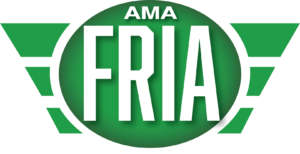
The Academy of Model Aeronautics (AMA) is a nonprofit community of enthusiasts who come together to celebrate model aviation.
We are hobbyists who dream, design, build, and fly model aircraft of all sizes for fun and competition. We do this because we enjoy the company of fellow enthusiasts, we love flight, and we want to see participation in our hobby grow. Our nationwide network of clubs supports this passion by providing flying fields, mutual learning, and a safe and fun environment for model aviation activities. Our organization advocates every day for the safe enjoyment of model aviation.
https://www.modelaircraft.org/
3 Great Radio Control Flying Glossary Websites
https://www.rc-airplane-world.com/rc-flying-glossary.html
https://scale-model-aircraft.com/guides/remote-control-airplanes-glossary
https://www.motionrc.com/blogs/motion-rc-blog/glossary
Common Terms:
RTF (Ready-To-Fly) RC airplanes are fully built and always come with a radio and engine (or motor) installed. Some RC airplane models even include batteries and charger.
BNF (Bind-N-Fly® RC Aircraft): One of the big benefits of Spektrum 2.4GHz technology is its ModelMatch™ feature. This allows a single Spektrum transmitter to be bound to (or paired with) multiple Spektrum receivers. We’ve used this ability to create innovative RC Bind-N-Fly (BNF) aircraft that come with a Spektrum receiver installed. Each BNF RC airplane can be flight ready in the time it takes to charge a battery. All a Spektrum transmitter owner has to do is choose the BNF RC airplane they want to fly, bind its receiver to their transmitter and fly.
PNP Plug-N-Play® (PNP) RC airplane models come out of the box with a factory-installed power system and servos that are ready to connect to the compatible receiver of your choice (sold separately). Simply install the receiver, finish any final assembly, and fly!
Almost Ready-to-Fly RC airplanes are largely built and completely finished, ARFs can be flight-ready in a few hours. Most will still require you to buy the same accessories as kits do, except paint and covering. Check the RC airplane’s product manual for additional requirements.
Kits Hobby Stores offer a wide selection of airplane kits to fit a wide range of skill level. With airplane kits, you’ll do most or all of the building, and will need to
buy and apply finishing materials. A radio system, power system and support equipment will be required for all RC airplane kits.
ARF Almost Ready-to-Fly RC airplanes are largely built and completely finished, ARFs can be flight-ready in a few hours. Most will still require you to buy the same accessories as kits do, except paint and covering. Check the RC airplane’s product manual for additional requirements.
Kits Hobby Stores offer a wide selection of airplane kits to fit a wide range of skill level. With airplane kits, you’ll do most or all of the building, and will need to buy and apply finishing materials. A radio system, power system and support equipment will be required for all RC airplane kits.
Ailerons – the moving section of the trailing edge (TE) of the wing, either located towards the outer end or along the whole length of the TE. Ailerons come in pairs, (left and right) and always work in opposite directions to each other (one up, one down). When used, they cause the airplane to roll to the left or right.
Buddy Box – one of the best training aids, where the student’s transmitter is attached via cable (or wirelessly) to the instructor’s.
Centre of Gravity / CG / CoG – the airplane’s point of fore-aft balance, or the point at which all gravitational forces act on the plane. As a very general rule of thumb it’s found approximately 1/4 to 1/3 of the way back from the leading edge of the wing and is built in during the design stage.
Flaps – moving sections of the trailing edge of the wing, usually found between the ailerons and fuselage. Used to create more lift at slower flying speeds and also to slow the plane on landing approach, flaps are usually only found on RC airplanes with 5 or more channels.
Fuselage – the main body of an airplane, excluding wings, tail and everything else.
Li-Po – stands for lithium ion polymer battery. These are the most modern kind of battery pack being used in electric aircraft. They provide enormous amounts of power for their size, especially when used in conjunction with a brushless motor.
RC or R/C – abbreviation for Radio Control. Often you’ll see ‘remote control’, but ‘radio control’ is the technically correct term.
Receiver – a component of the radio control gear that lives inside the aircraft and picks up the radio signals being emitted by the transmitter. More details here.
Rudder – the moving section on the back half of the fin. Used to control the airplane’s yaw.
Tail – At the back end of the fuselage, the tail comes in many forms including conventional or T-tail, V-tail, or flat.
Transmitter – the main component of the radio control system that you hold in your hands while trying to control your rc airplane.
Trimming – the action of getting your plane to fly straight and level, with the transmitter sticks in their neutral positions and no input from you. More details here.
